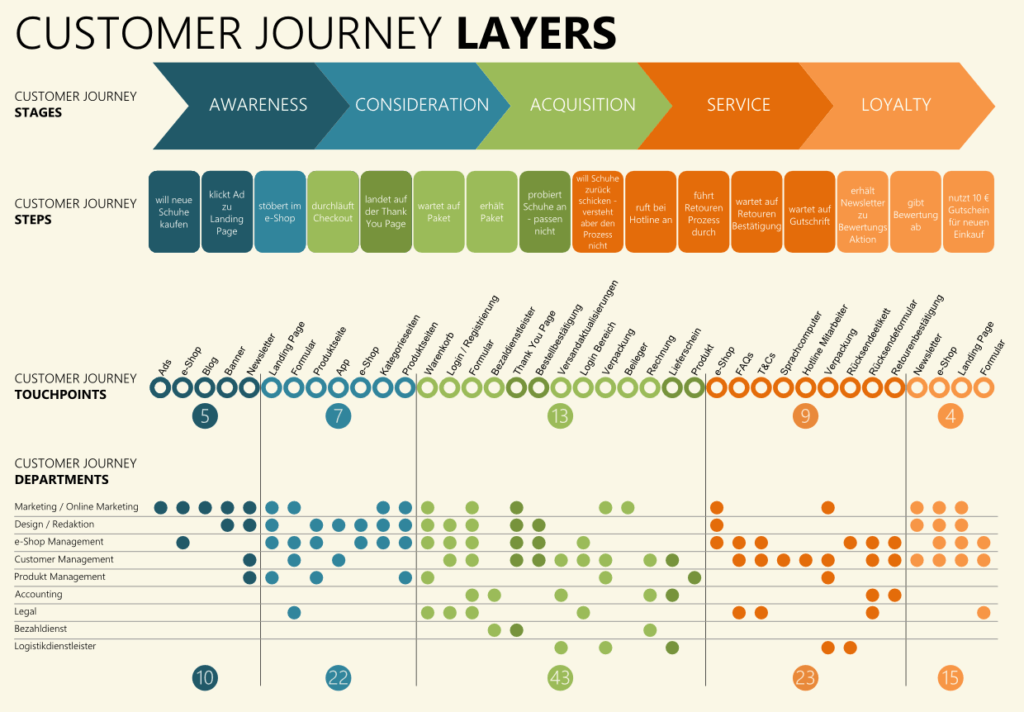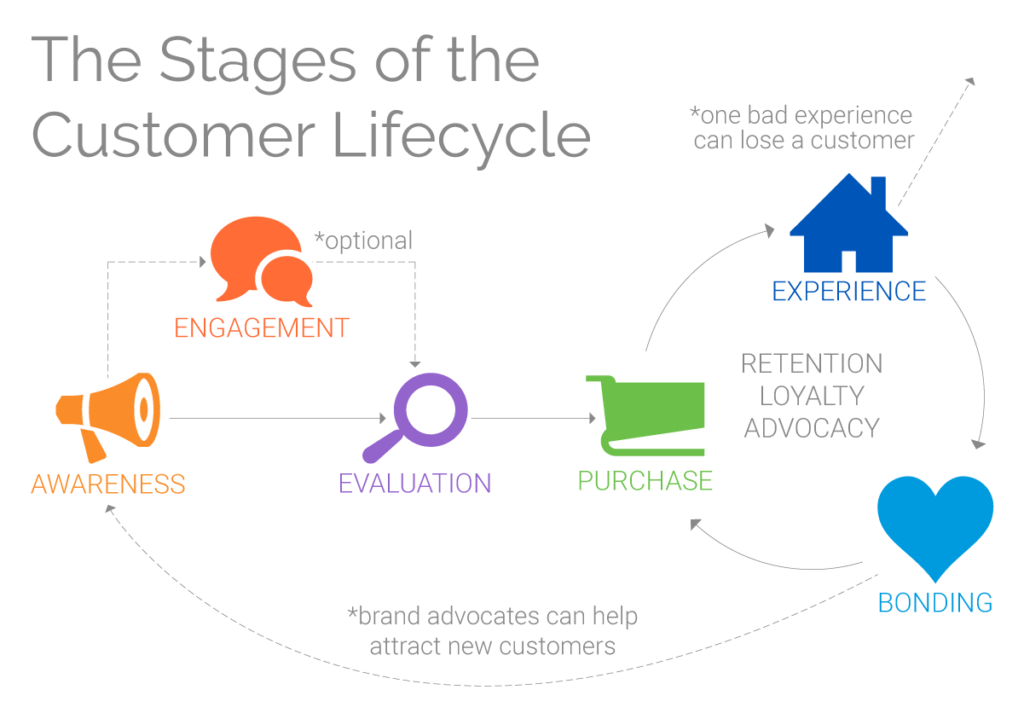Research by firms such as Forrester and Temkin have found that customer journey mapping is moving front and center for many marketing and customer experience professionals.
Why? Because the more you understand your customer’s journey the better you can address opportunities to improve key decisions based on business results such as product/service adoption, customer service, customer interaction, and user research.
For example, part of the process in creating a customer journey maps can help you uncover the future state or breaking points – those points where prospects or customers ride off into the sunset – in your existing processes, enabling you to prioritize process improvements.
In 2010, Adam Richardson, author of Innovation X: Why a Company’s Toughest Problems are its Greatest Advantage, crafted this definition, a customer journey map is a very simple idea: a diagram that illustrates the steps your customer(s) go through in engaging with your company, whether it be a product, an online experience, retail experience, or a service, or any combination.
He highlighted that “the more customer touchpoints you have, the more complicated — but necessary — such a map becomes.” The purpose of a customer journey map is to illustrate the path your customer’s take from THEIR perspective on whatever aspect of the process you need to map.
The foundation of any customer journey map is capturing your customer’s steps and the touchpoints, such as analyst reports, peer reviews/testimonials, demonstrations, product information; and channels, such as phone, in person, online, etc. that they prefer in each part of the journey.
Create Your Map with These Five Steps
While it is common to begin the mapping effort by collaboratively capturing what you believe is the customer journey, the most effective journey maps incorporate actual customer research. Maps that skip the outside-in step run the risk of merely being a reflection of employee biases. Good maps leverage outside research to ensure validity.
What tools you use to create your visual map isn’t as important as how you create your map. Typically, these five primary steps are used to create your map.
Define the ecosystem design process
This is what a member of the market community will be the focus of the journey. For example, are you trying to understand the customer journey for large established global manufacturers or a particular group of emerging niche manufacturers?
Select the customer journey stage
Mapping the entire end-to-end journey can be a very daunting undertaking. By using existing data, such as customer satisfaction data that reveals potential breaking points, voice of customer data about buying preferences, sales data such as win/loss analysis, marketing data related to what did or didn’t produce action, and so on you can identify the most important sub-journeys or stage within the overall journey. Many journey stages fall into one of these common four sub journeys: Pre-sales/Demand Gen; Sales/The Journey of the Deal; Consumption/ The Journey of Usage and Community/The Post-Sales Experience.
Choose the persona(s) for customer journey
Different personas may approach a sub-journey differently. They may have different motivations and may react differently to situations. Innovative Ivan may be far more flexible and experimental in a beta test situation than Cautious Carl. The type of content and touchpoints, their order and frequency may vary significantly even though both Ivan and Carl are VPs of Manufacturing at large global companies. Each persona should reflect a type of prospect or specific customer you can easily recognize. If you haven’t developed personas, take this step first. Learn more about personas, their value, and how they differ from roles and profiles.
Map the journey by persona
Identify what motivates the persona to take the journey and then step into your customer’s shoes. Start identifying the path they take for the specific journey. Do your best to take the walk from their point of view. Take a behavioral as well as emotional and intellectual approach. For each step, capture what they do at each stage, what moves them to the next stage, what emotions they are experiencing and thoughts they are having at that stage, what questions, issues, or challenges they are likely to experience at that stage that might deter them from moving forward. Capture it all and create custoer journey map. Here is an illustration of what your map might look like.
Validate your map
What you really have is a hypothesis. Before you make decisions or take action, you need to verify how accurately the map reflects the actual journey. There are various ways to validate the map. You can engage in customer advisory boards or focus groups and have them go through the same exercise. Or you can circle back to the persona existing research participants and invite them in the next phase of the study. You can also quickly test them on social media.
Four More Things Before You Press Go
You created and validated your map. What’s left to do? These four things.
- Establish the metrics for how you will measure the success of journey map implementation. For example, for post-purchase journeys will your metric be an overall improvement in customer satisfaction, a reduction in customer defection, an improvement in referral rate, an improvement in share of wallet, a combination of these, or all of them. For pre-purchase journeys, it may be an increase in the number of qualified opportunities.
- Identify the breakpoints or the pain points on the map. You will need these to understand what to address, what to prioritize and where to invest.
- Determine what content (a revision in the help or qualification scripts), touch points (call center, internal technical support, inside sales), and channel (phone, online chat, etc.) additions or changes are needed. Identify the location on the map for each of these.
- Develop your action plan for bringing the map to life. Remember to monitor results.
Melding your inside-out and the outside-in together enables you to create a customer journey map that reflects your customer journey.




